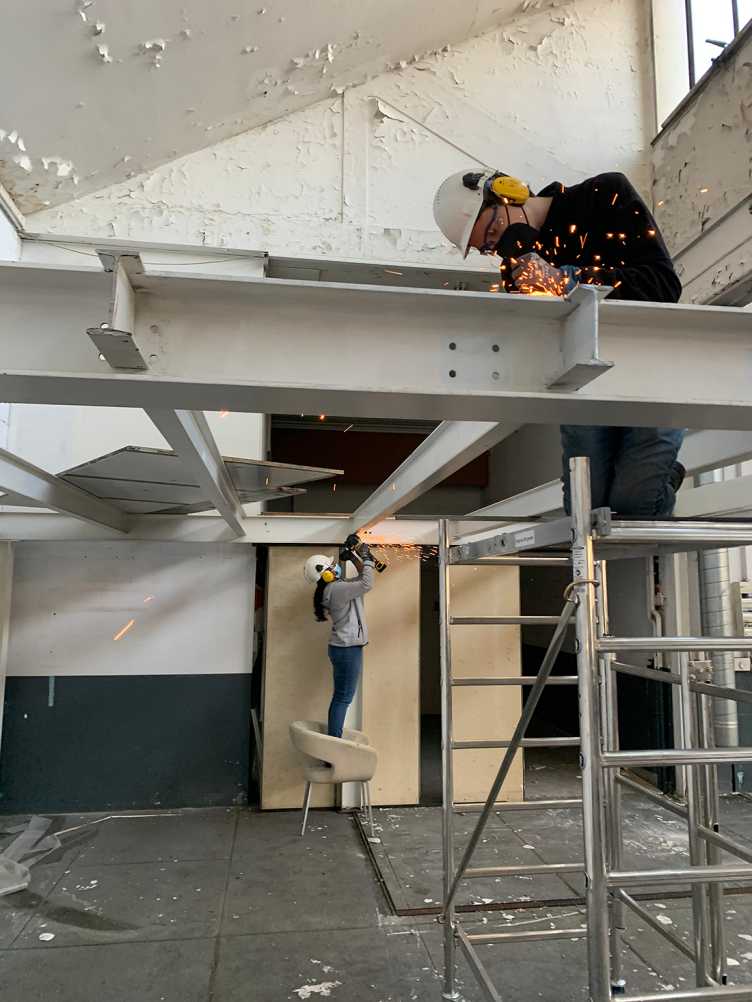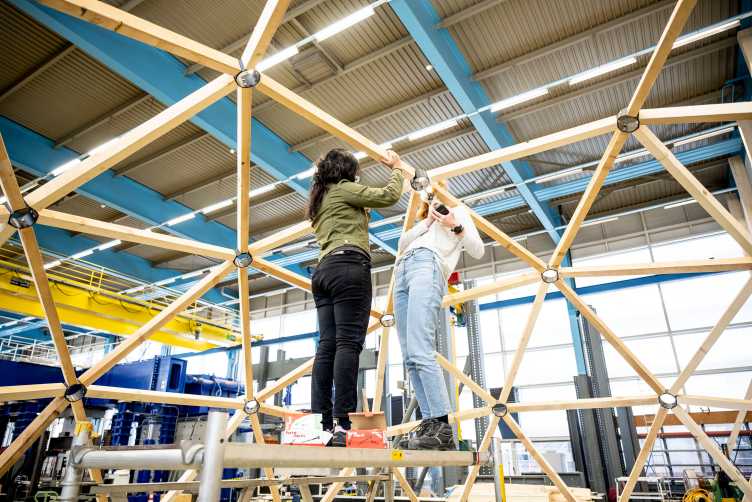Dome1: Digital technologies for circular construction
The architecture, engineering and construction (AEC) sector must shift from a linear to a circular economy to reduce its large environmental footprint. Circular economy in the context of construction is a broad field that involves various concepts, such as design for disassembly, reuse of construction elements, alternative business models (such as product as a service), etc. These allow to increase the value of available resources by keeping them in the loop. Thus, waste generation, greenhouse gas emissions, and resource depletion related to construction are reduced.
To address logistical challenges of a circular built environment, various digital technologies have shown a large potential.
Approach: This research aims at exploring the entire process of circular construction to identify gaps and challenges that still prevent its application in construction projects. This is a hands-on project, utilising digital technologies throughout, to investigate how to transform construction elements of an existing building into a dome made only of reused materials.
Research: The project addresses the complexity of circular construction by including various steps that represent the whole life cycle of the circular process: (i) digital inventory with scanning, (ii) extraction of available materials, (iii) computational design based on these available materials, (iv) QR-coding and database of material passports for material tracking and tracing, (v) remanufacturing of reused elements and dome construction.

(i) Capturing the initial conditions of the site using 360-degree cameras. Scanning technologies were first used on the existing building, a warehouse in Geneva, to produce point cloud models. Often already used in new construction, we explored this digitization method to produce estimated inventories of recoverable material before disassembly.

(ii) Recovering structural elements not originally intended for disassembly. During disassembly, care was taken to preserve as much of the original form and thus the value of the materials. Each component was logged in a digital inventory.

(iii) Using a computational algorithm for the design of the dome from recovered materials. This system determined the ideal way to produce each part of the design from our inventory, as well as optimising parameters of the design to reduce the final produced waste.

(iv) QR-codes laser-engraved into the timber beams for material tracking. As part of the tracking and tracing phase, QR-codes were laser-engraved into the timber beams and a database was developed to create a material passport. These methods helped to understand how to give a dynamic identity to elements that provide information on their different life cycles, first as primary materials and then as reused materials.

(v) Remanufacturing of reused timber beams and dome construction. Finally, the dismantling and construction stages differed from traditional practices with primary materials, which helped to identify the expertise needed to accompany these circular applications.

Outputs: This research allowed to first highlight the potential of circular construction with the construction of a dome made of reused timber beams and pipes only. Moreover, the efficiency of digital technologies as enablers of circular processes was demonstrated with the development of site digitization and analysis methods, design algorithms and material passports. This project therefore identified both logistical and technical challenges related to reuse in order to develop effective methods and tools to accelerate the transition to circular construction.
Funding:
Circular Flanders, Call Circular Building Economy - Flemish Agency for Innovation and Enterprise (VLAIO)
Duration:
October 2021 - October 2022
Principle Investigator:
Prof. Dr. Catherine De Wolf
Researchers:
Matthew Gordon
Deepika Raghu
Brandon Byers